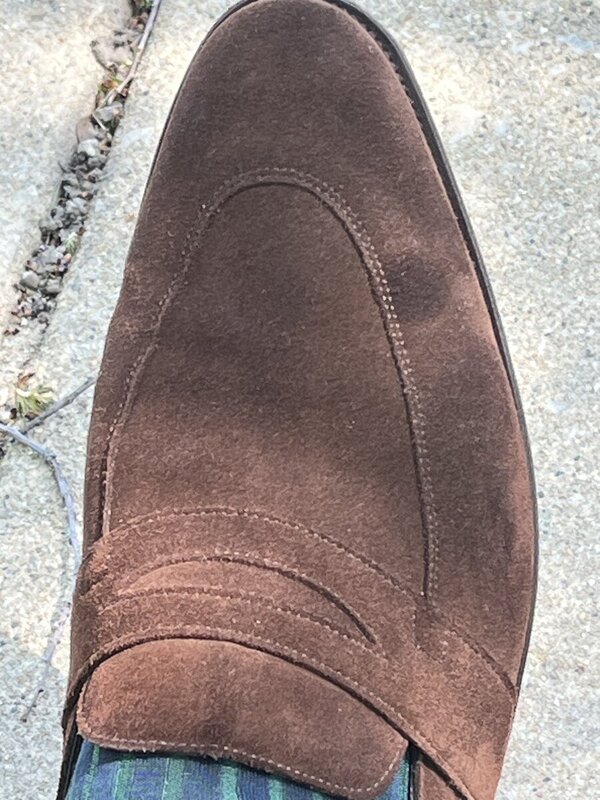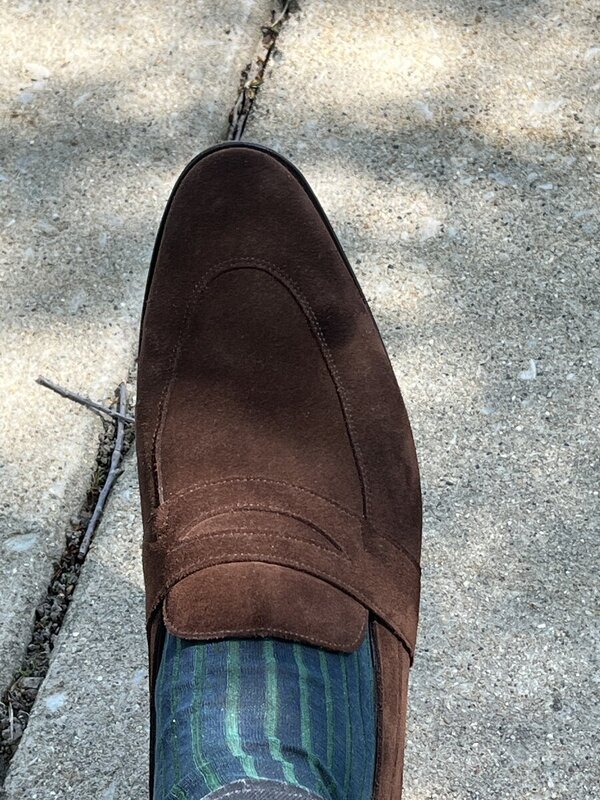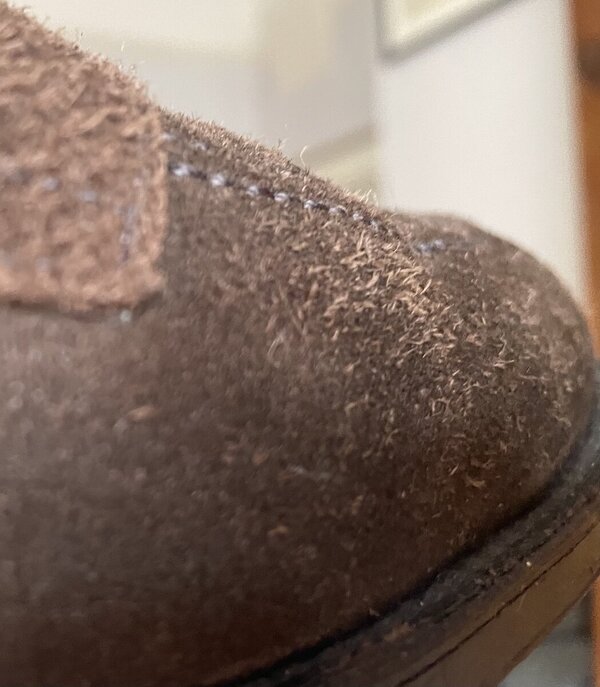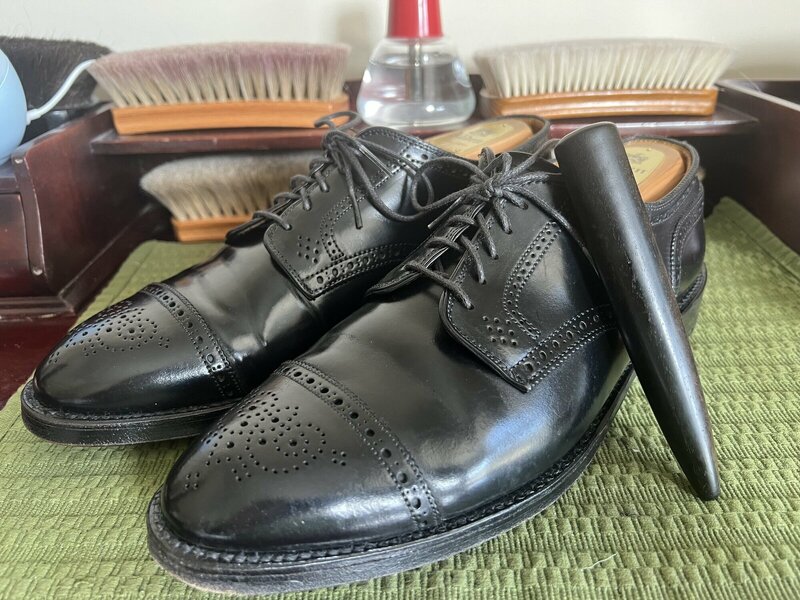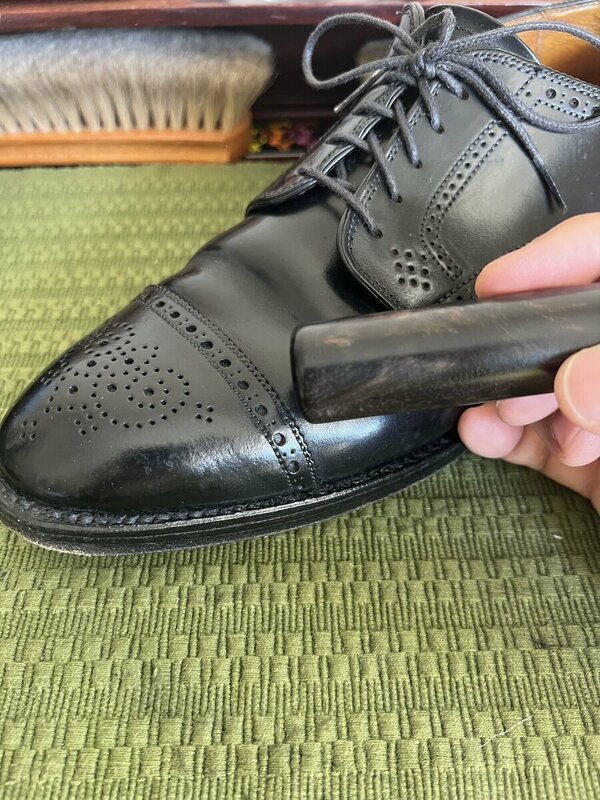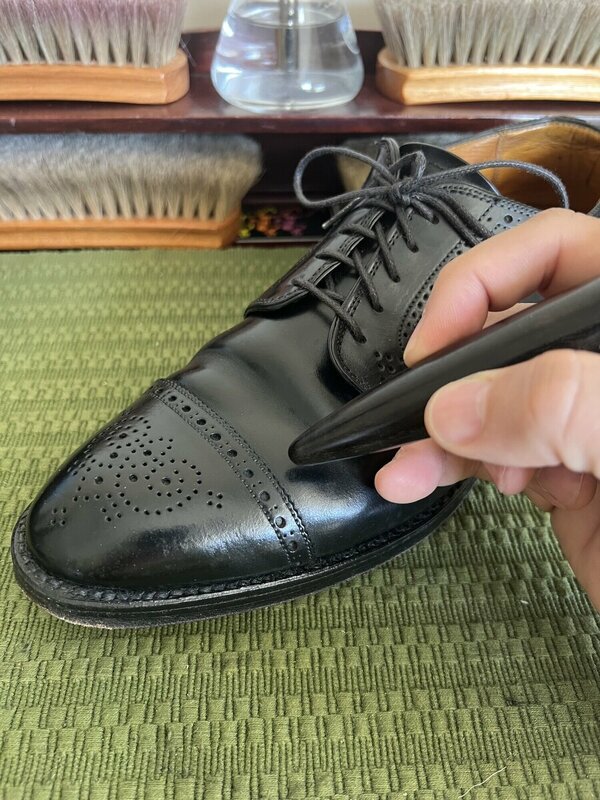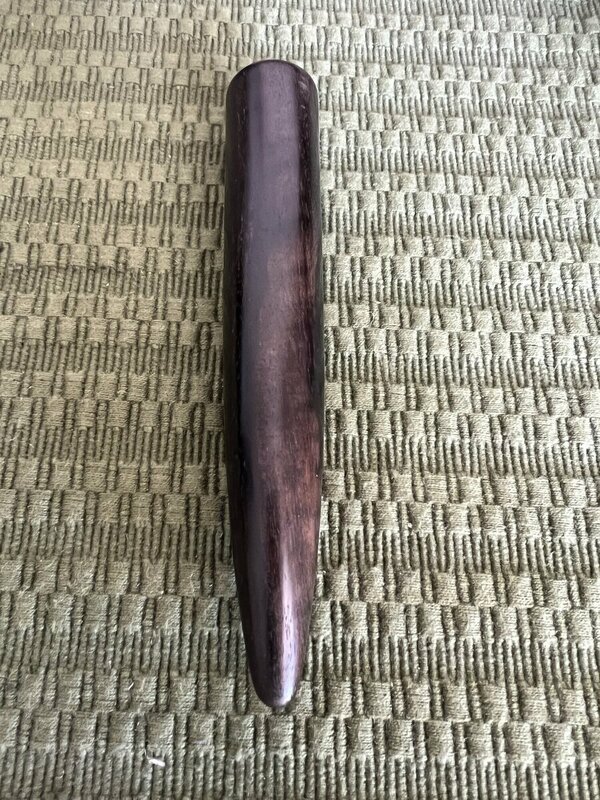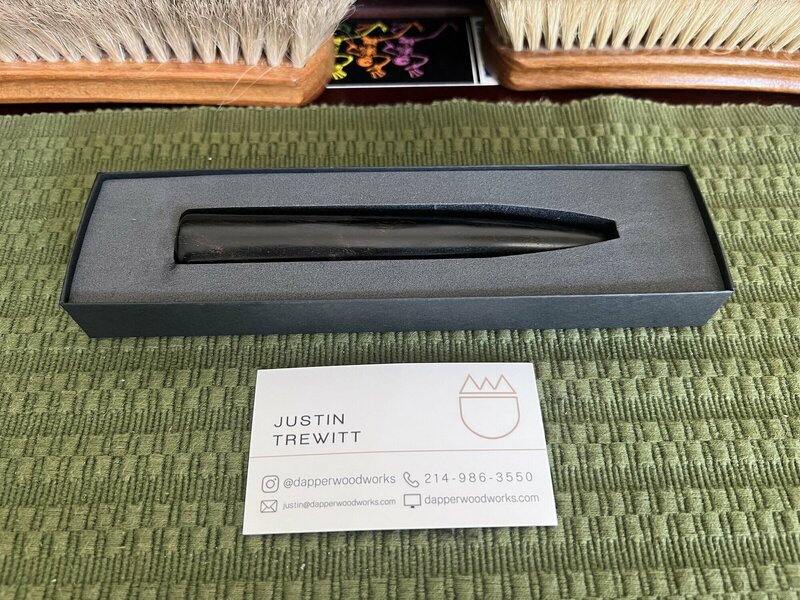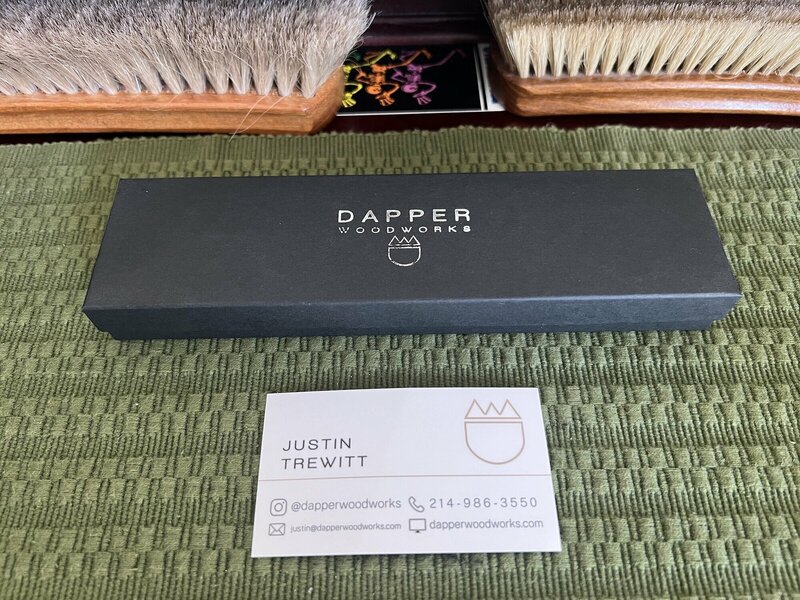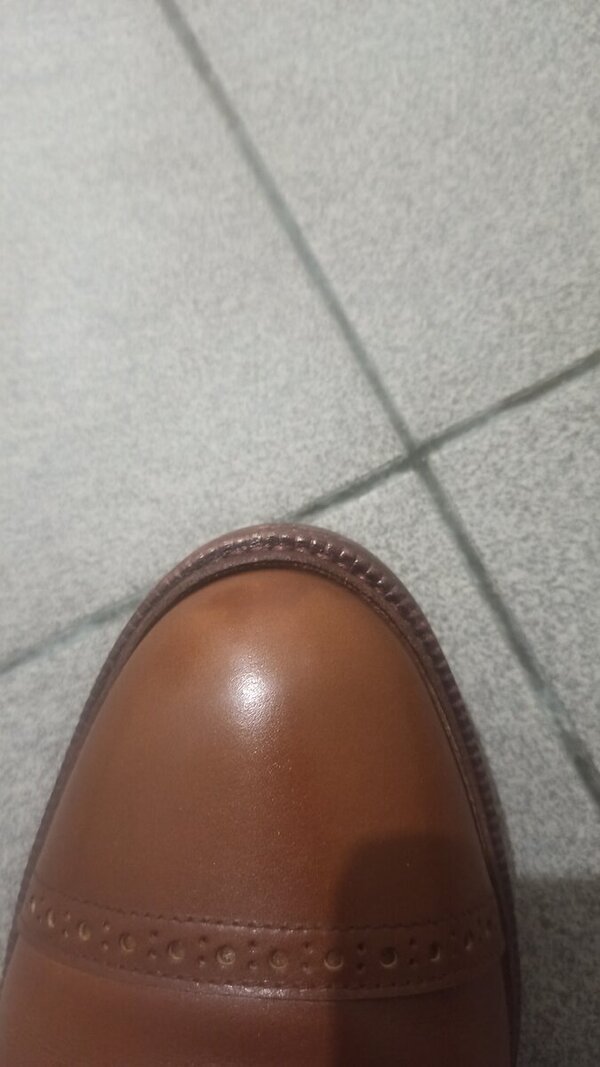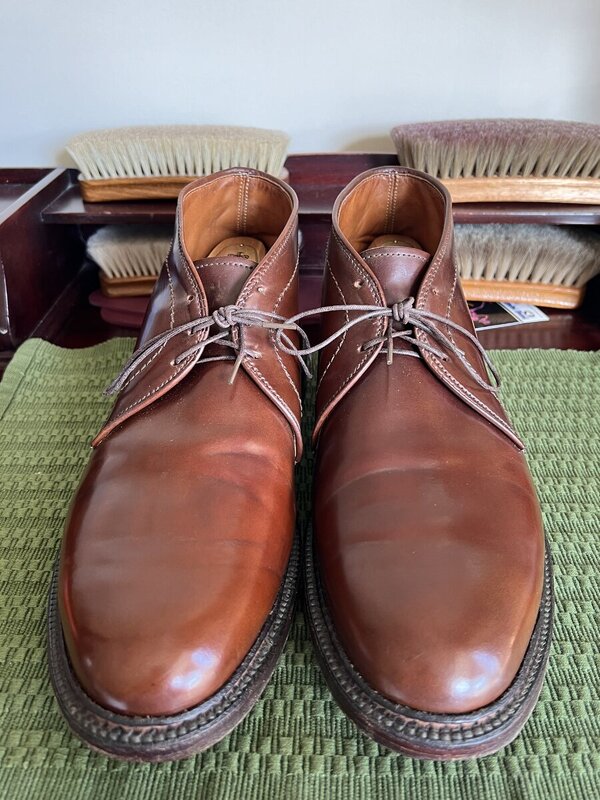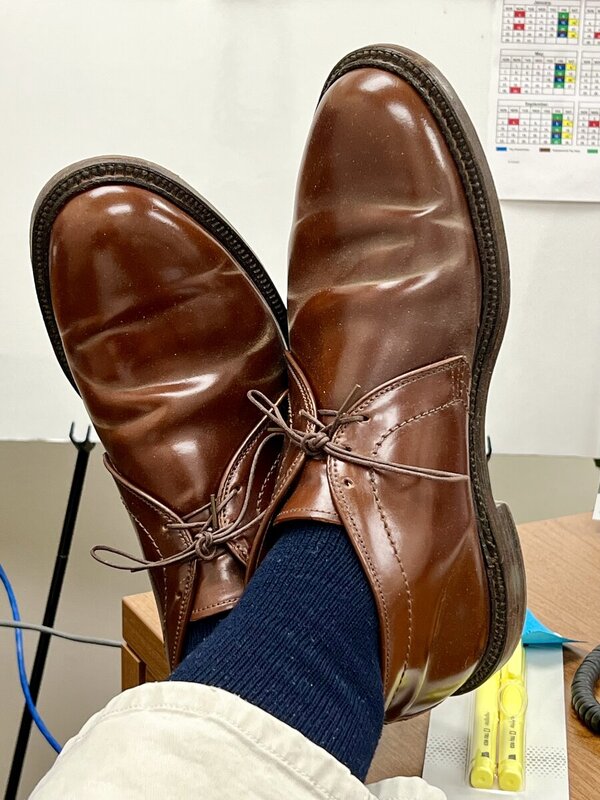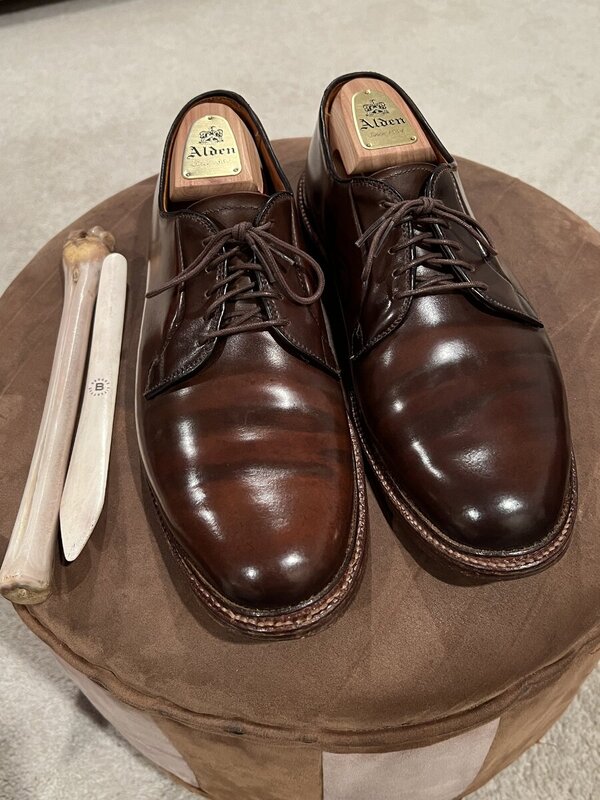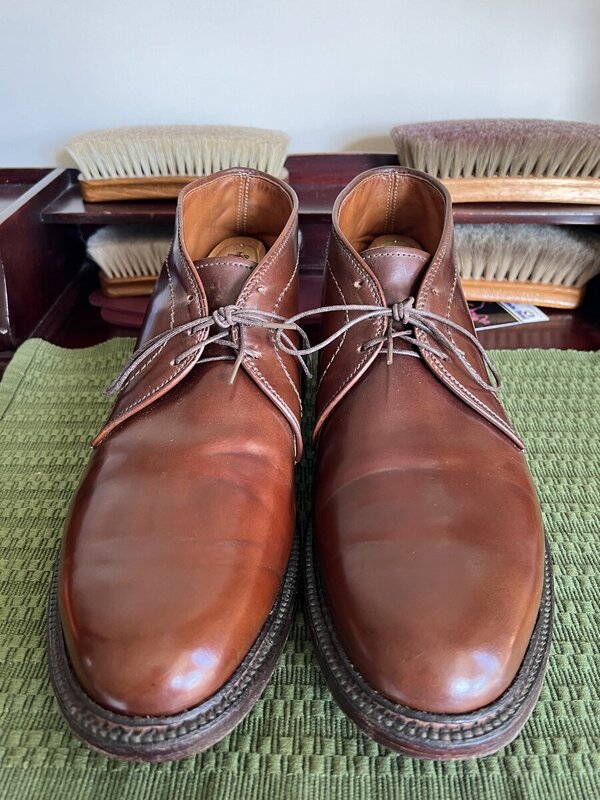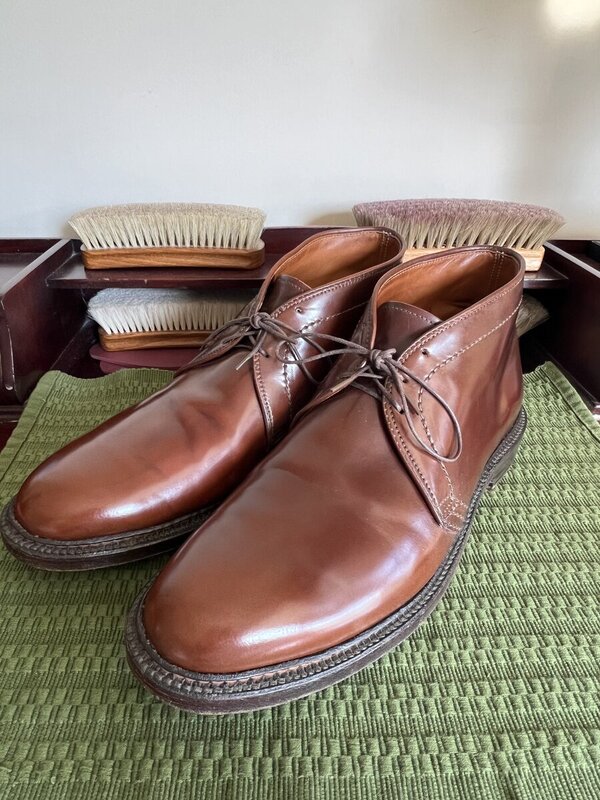Munky
Distinguished Member
- Joined
- Jun 5, 2013
- Messages
- 2,729
- Reaction score
- 2,255
Fair enough! But you have dodged my other issues. Is GW no better than cementing? Would the members of this thread be as happy with cemented as with welted shoes? Would the customer at Lobb's be likely to ask for cemented shoes rather than welted ones? If he does't specify cemented, why not?
Finally, are most of the shoes you make, cemented?
Finally, are most of the shoes you make, cemented?
![Fing02[1] :fonz: :fonz:](/styleforum_ads/smilies/fing02[1].gif)

















